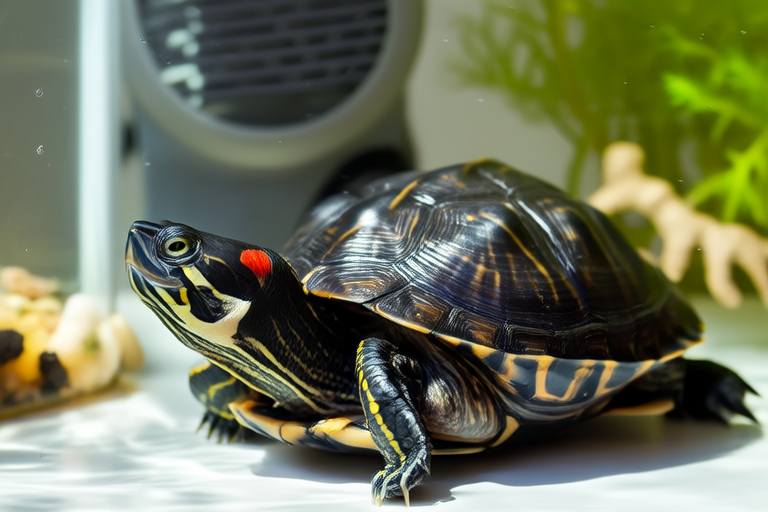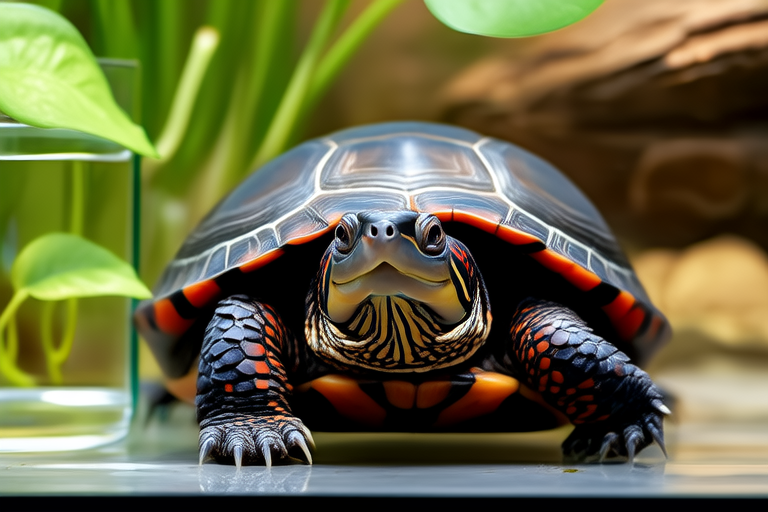7 Myths About Red-Eared Sliders That Might Be Hurting Your Pet
Red-eared sliders (Trachemys scripta elegans) are one of the most popular pet turtle species worldwide. Their striking appearance, with bright green shells and distinctive red markings behind their eyes, makes them appealing to many. These semi-aquatic turtles can live up to 40 years in captivity, making them long-term companions. However, their popularity has also led to widespread misinformation, which can significantly harm their health and well-being. This article aims to debunk seven common myths about red-eared sliders that might be hurting your pet.
Myth 1: Red-Eared Sliders Can Live Comfortably in Small Tanks
One of the most pervasive myths about red-eared sliders is that they can thrive in small tanks. Many first-time owners believe that a standard fish tank or aquarium will suffice for their new pet. In reality, red-eared sliders require spacious habitats that accommodate both water and land areas. A young turtle may need at least 10 gallons of water per inch of shell length, while adult turtles require even more space—upwards of 80 gallons for a fully grown individual. Insufficient space can lead to stress, poor growth, and respiratory infections. It’s essential to provide ample room for swimming and basking, ensuring your pet has enough area to move around comfortably.
Myth 2: Red-Eared Sliders Don’t Need UVB Lighting
Another common misconception is that red-eared sliders don’t require UVB lighting. While these turtles can bask under regular light bulbs, they need UVB radiation to synthesize vitamin D3, crucial for calcium absorption and bone health. Without adequate UVB exposure, turtles may develop metabolic bone disease, characterized by soft, brittle bones and deformities. Providing a high-quality UVB lamp that covers at least half of the basking area is vital for maintaining your pet’s health. Ensure the bulb is replaced every six months, as UVB output diminishes over time.
Myth 3: Any Fresh Water Is Suitable for Red-Eared Sliders
It’s often assumed that any fresh water is suitable for red-eared sliders. However, tap water can contain harmful chemicals like chlorine and chloramines, which can irritate a turtle’s skin and shell. Using untreated tap water can also lead to bacterial and fungal infections. To ensure your pet’s safety, always use dechlorinated or distilled water. Alternatively, you can let tap water sit for 24 hours to allow chlorine to evaporate. Regular water changes (at least once a week) and filtration systems are necessary to maintain water quality and prevent ammonia build-up, which can be toxic to turtles.
Myth 4: Feeding Red-Eared Sliders Only Commercial Turtle Pellets Is Sufficient
Many owners believe that commercial turtle pellets provide all the nutrients a red-eared slider needs. While pellets are convenient and can form part of a balanced diet, they should not be the sole food source. A varied diet rich in vegetables, fruits, and protein is essential for optimal health. Offer leafy greens such as romaine lettuce, dandelion greens, and collard greens, along with occasional treats like berries, melon, and carrots. Protein sources can include earthworms, crickets, and commercially available reptile foods. Over-reliance on pellets can lead to nutritional deficiencies and obesity, affecting your pet’s overall well-being.
Myth 5: Red-Eared Sliders Hibernate Naturally Indoors
Some owners mistakenly think that red-eared sliders hibernate naturally indoors. In the wild, these turtles brumate during colder months, reducing their activity levels and metabolism. Indoor environments, however, lack the natural temperature fluctuations that trigger this process. Attempting to induce brumation artificially can cause stress and potentially fatal health issues. Instead, maintain a consistent warm environment year-round, providing a stable temperature gradient between the water and basking areas. If you notice signs of lethargy or decreased appetite, consult a veterinarian rather than assuming your turtle is brumating.
Myth 6: Red-Eared Sliders Can Share Tanks with Fish
It’s commonly believed that red-eared sliders can share tanks with fish, creating a harmonious aquatic environment. However, these turtles are omnivorous and will readily consume smaller fish, crustaceans, and even plant matter. Keeping fish with red-eared sliders can lead to stress, injury, and death of the fish. Additionally, fish waste can contaminate the water, leading to poor water quality and potential health risks for the turtle. To ensure both the turtle and any fish remain healthy, it’s best to keep them in separate enclosures.
Myth 7: Red-Eared Sliders Are Low-Maintenance Pets
The final myth is that red-eared sliders are low-maintenance pets. While these turtles are hardy creatures, they require specific care and attention to thrive. Maintaining a clean, properly sized enclosure, providing appropriate lighting, and offering a balanced diet are all critical aspects of responsible ownership. Neglecting these needs can result in health problems and shortened lifespans. Investing time in learning about your pet’s specific requirements will ensure a happy, healthy companion for many years.
Tips for Responsible Turtle Ownership
Before adopting a red-eared slider, it’s crucial to educate yourself thoroughly on their care requirements. Research reputable breeders and avoid purchasing from pet stores, as many captive-bred turtles come from overcrowded breeding facilities. Once you bring your turtle home, invest in the right equipment, including a large tank, UVB lighting, and a reliable filtration system. Regular veterinary check-ups are also essential for monitoring your pet’s health and addressing any issues promptly.
Remember, owning a red-eared slider is a long-term commitment. By dispelling these myths and following best practices, you can provide your pet with a safe, comfortable environment and enjoy a rewarding relationship for decades to come.

